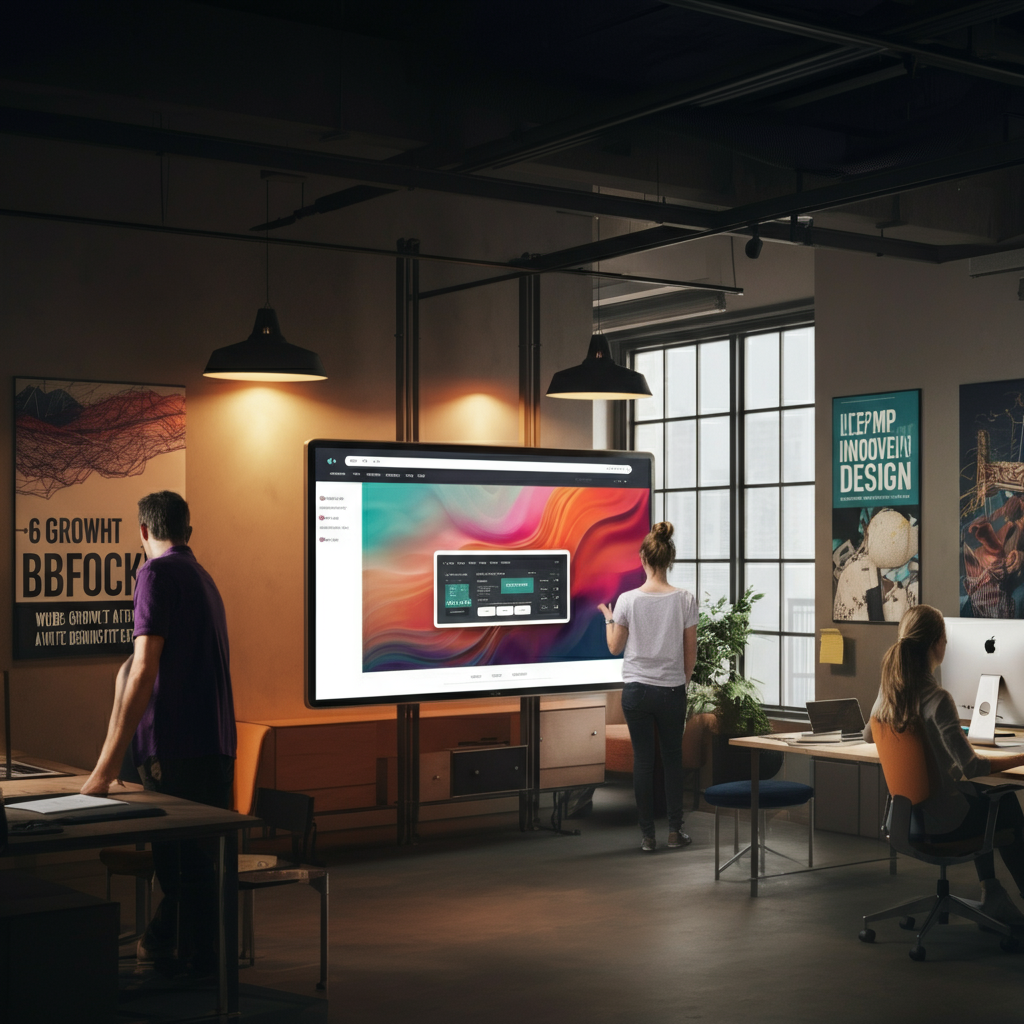Your website is your store’s shop-window on the web. Whether people choose to stay and interact, or jump ship in frustration, is often down to one critical factor – the quality of your User Experience (UX) and User Interface (UI) design. If UX is the skeleton of a site, then together, UI and UX are the body and soul.
This article will delve into the dimensions of UX/UI design component in the making of a website, focusing on why it is crucial and what principles of design are instrumental and how it can affect the business through effective design. You’ll also find practical insights on how to make a website that makes a long-lasting impression and increases user engagement and conversions.
What is UX/UI?
UX (User Experience) Design
Large image At its heart, UX design is about users’ interactions with a website. It includes usability, accessibility and the general movement of the digital experience. Consider UX to be the function and usability aspects of your site or blog, that make sure people can quickly get to what they are seeking without getting frustrated.
For instance, creating a nav bar that is easy to find, easy to use is a part of UX.
UI (User Interface) Design
UI design, by contrast, works on the visual and interactive elements. It can be things like buttons, typography, color schemes and layout.
UI not only designs the website to look attractive but also allows users to understand visually what they can click and tap. For instance, a big, bright yellow “Sign up” button that stands out against a clean background grabs more of our attention.
The UX/UI Partnership
Although UX and UI are separate, they each share the same hand. You could also think of UX as the skeleton of a body, with UI being the skin, color, features, etc that make the body functional. A good UX makes functions work, and an amazing UI lets people engaged emotionally with that.
Real-World Example
Apple Exploits the Nexus Between UX and UI Apple’s website cites it as taking advantage of the synergy of UI and UX.’ The simple minimalism of the interface encourages intuitive navigation (UX), while sliding movements and clear-cut visuals (UI) make for an interactive, premium feel to the user. This kind of seamlessness is why Apple is so great at customer satisfaction and retention.

The Impact of UX/UI on Website Usability
Why Usability Matters
The usability of a website largely determines whether visitors remain and convert. A badly designed site annoys users and turns them off, leading to low engagement and perhaps affecting your revenue.
Key Usability Factors
- Mobile Responsiveness
More than half of web traffic originates from mobile devices. Responsive design makes your website look great across all devices.
- Fast Load Times
Studies have shown that users aren’t patient and 40% of them will leave a site that takes more than 3 seconds to load. This can make a huge difference in loading times, and in addition to good visual optimization, smart coding and scalable servers can be used to deliver content quickly.
- Intuitive Navigation
Upon arrival, users should intuitively know how to navigate your site. Self-explanatory menus, well-organized information and a search bar all make for easy navigation.
Example of Excellence
Amazon is such a good example of good usability. Simplicity of navigation and seamless product finding are facilitated by intuitive UX, while the UI supports priority-based recommendations with clean design and interactivity.

Principles of Effective UI Design
1. Visual Hierarchy
Visual hierarchy is how you organize elements by importance. For instance, keywords are given larger or bolder emphasis that draws the user’s eye to important information.
2. Consistency
Branding and Other Resources A consistent use of fonts, color palettes, and button styles design trust and recognition. The more the design is familiar and unified then the more engaged the user is.
3. Simplicity
Users get lost in busy layouts. Focus on whitespace, avoid distracting elements and show only what’s necessary for a clean and impactful design.
4. Contrast
The contrast keeps elements apart and enhances readability. For example, white text on a dark background gives good contrast.
Example of Excellence
Spotify’s UI is a testament to the power of green, black, and intuitive, yet visually stimulating interface elements. It has a simple layout that makes it easy to use and navigate, so you can use and move about the site on both desktop and mobile versions.
UX/UI Best Practices for Website Development
1. User-Centered Design
Have your perfect customer in mind when you’re designing your site. Discover their needs and struggles through research tools such as surveys, personas and focus groups.
2. Accessibility
Validate that your site is accessible by meeting the accessibility standards (for example, the Web Content Accessibility Guidelines (WCAG)). Alt text for images and keyboard navigation help people with disabilities use web pages more easily.
3. Prototyping and Testing
Draw wireframes and build prototypes, and use them as a guide before you start. Try them out on real users, get feedback and iterate your interface. (NFLX) listens to customer feedback and trials updates before pushing them out live, which means its design is continually evolving based on the pulse of its audience.
4. Iterative Design
There is no such thing as a perfect website. Always measure performance through analytics and user behavior, and optimise.
The Role of UX/UI in Conversion Rate Optimization (CRO)
UX/UI’s Influence on CRO
Here’s why UX/UI plays a massive role in driving conversions:
- The clear CTA positions simplify the process of users transitioning to the next stage.
- When customers can check out with ease, more people will purchase and abandon fewer carts.
- Beautiful visuals, easy navigation build trust and take user clicks to the next level.
Example of Success
Shopify ux/ui design The UX/UI design for Shopify put emphasis on an easy checkout process for the stores based on the Shopify platform. That means less friction, and better conversion rates from its user base.
Practical Tips for CRO
- Use contrasting colors to highlight CTAs.
- Simplify forms by asking for only essential information.
- Ensure your landing pages align with user intent.

Web Design Trends for 2025
1. Minimalism
Customers are favoring clean, uncluttered websites that feature a lot of white space. This ensures the content pops without overpowering the user.
2. Dark Mode
Dark mode is great alternative developers may include to help protect users’ eyes and call attention to specific visual elements of a game.
3. Motion UI
Delicate animations, transitions, and micro-interactions bring life to websites in a subtle way that doesn’t look invasive.
Example
Tesla has managed to set you miles ahead with user-focused experiences, subtle animations, and simplistic looking designs which feel future-proofed.
How to Implement Effective UX/UI Design
1. Start with Research
Get to know your audience by using surveys and analytics. This will inform choices around usability, accessibility, and visual design.
2. Collaborate with Developers
Design and development must collaborate to make sure interactive elements and responsive designs work regardless of platform.
3. Choose the Right Tools
Designing and Prototyping is easy with tools like Figma, Sketch and Adobe XD.
Example
The Spotify app for mobile has been a great teamwork by both Design and Dev, at Spotify! They are always tuning the UX/UI based on actual user use.
Invest in UX/UI for Long-Term Success
It isn’t just a case of design aesthetics however, its all about providing users with the most meaningful, memorable and efficient experiences. With best practices and a little future-proofing, your website can shine in a crowded virtual space.
Don’t take your website’s performance for granted. Move forward by assessing your exisiting UX/UI and then bringing in a design pro to utilize the potential of your website.
Conclusion
Good UX/ UI design is an essential element of good website design and development which determines user satisfaction levels, engagement and conversions. User-centric design allows your website to do what is important: meet your audience’s needs while providing an intuitive and fun experience. By highlighting smooth navigation, responsive user interfaces and relevant interactions you can build a community of visitors to your platform, who become customers.





